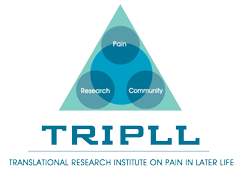TRIPLL interviews Robbie Altman, N.P. a palliative care nurse practitioner at New York Hospital who has integrated relaxation and aromatherapy practice into the treatment of her patients suffering from pain and anxiety.
TRIPLL: Thank you for talking with me. Can you describe your work in palliative care?
Robbie Altman: I am the nurse practitioner on the palliative care consult service. The team is interdisciplinary, and I work with a physician and a social worker. We are able to cover many aspects of patients’ cases, including the psycho-social aspects.
TRIPLL: What kinds of pain problems do you see on your consult service?
Robbie Altman: We see a lot of cancer pain on our service, but also we see patients who come in with other pain problems that may complicate their treatment. With the cancer patients we know that pain is an ongoing issue, and we try to avoid the peaks and valleys associated with their pain and treatment.
TRIPLL: Do you see any pain issues specific to older patients?
Robbie: We often see patients with existing arthritis or existing spinal stenosis along with cancer pain. With our patients a comprehensive pain assessment is very important since their pain might not be related to the cancer and may be best treated by a different intervention.
TRIPLL: Can you tell us about your work in relaxation?
I do aromatherapy and relaxation massage as adjunctive therapy in addition to more conventional pain treatments. The response to pain is often emotional and physical. The pain medications relieve the physical part, but we also need to deal with the emotional piece. The “what is the meaning behind the pain” question. If someone feels that increased pain means progression of disease, you have anxiety that needs to be addressed. In addition other people are resistant to taking medications, so this is useful.
TRIPLL: Can you describe the technique?
The technique really brings touch back into medicine. It is called M (manual) technique and was created by a nurse who worked in critical care. The treatment is light repetitive massage with aromatic scents to communicate through touch and through smell. The patients find their pain and anxiety both go down. In fact, some of our patients’ family members also report that they feel relaxed after the treatment.
TRIPLL: How would you summarize your experience working with patients with pain problems?
Robbie Altman: Pain in palliative care is multifaceted and is often linked with fears about disease progression. In the palliative care setting and with an interdisciplinary team we are able to address the physical and psychological aspects of the pain experience.
